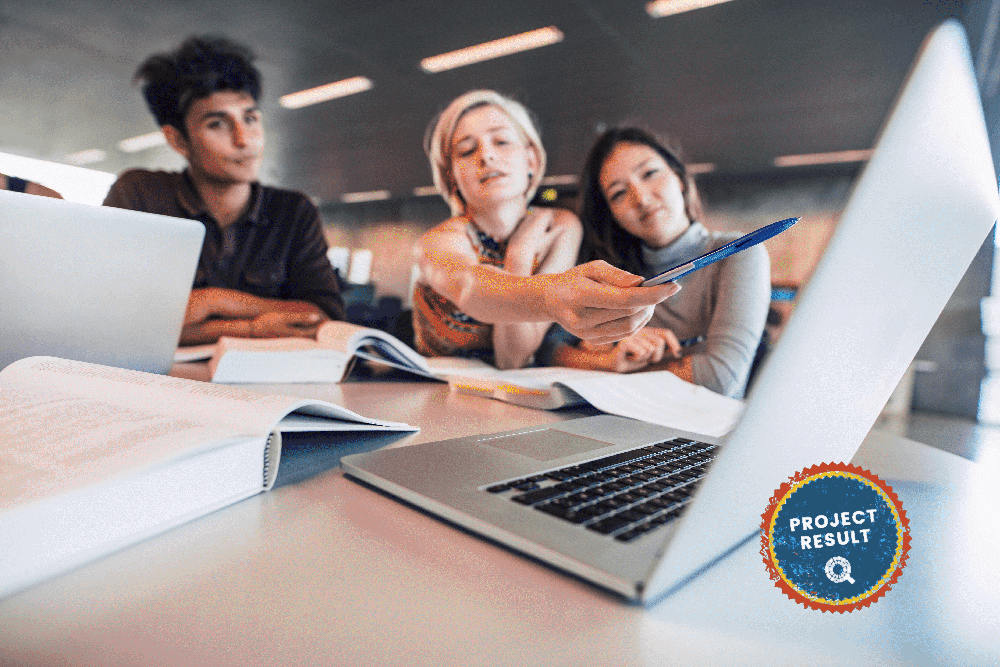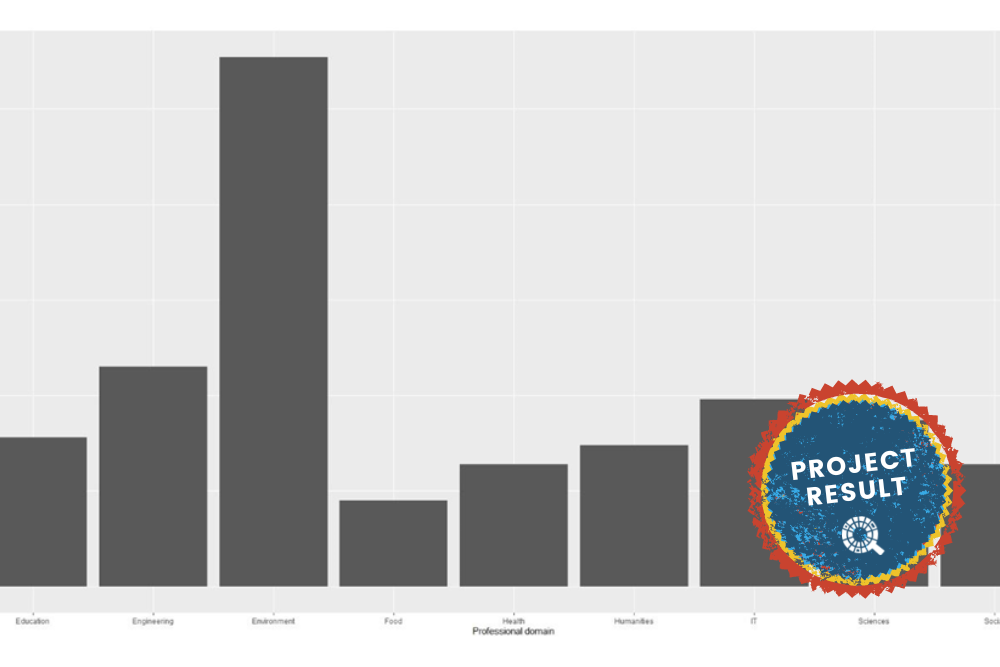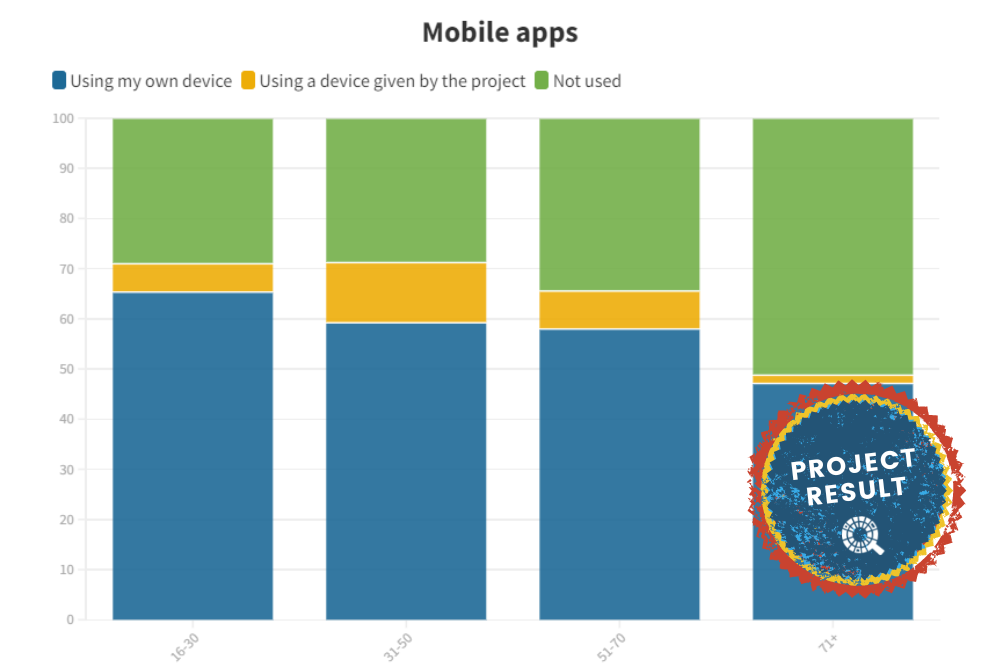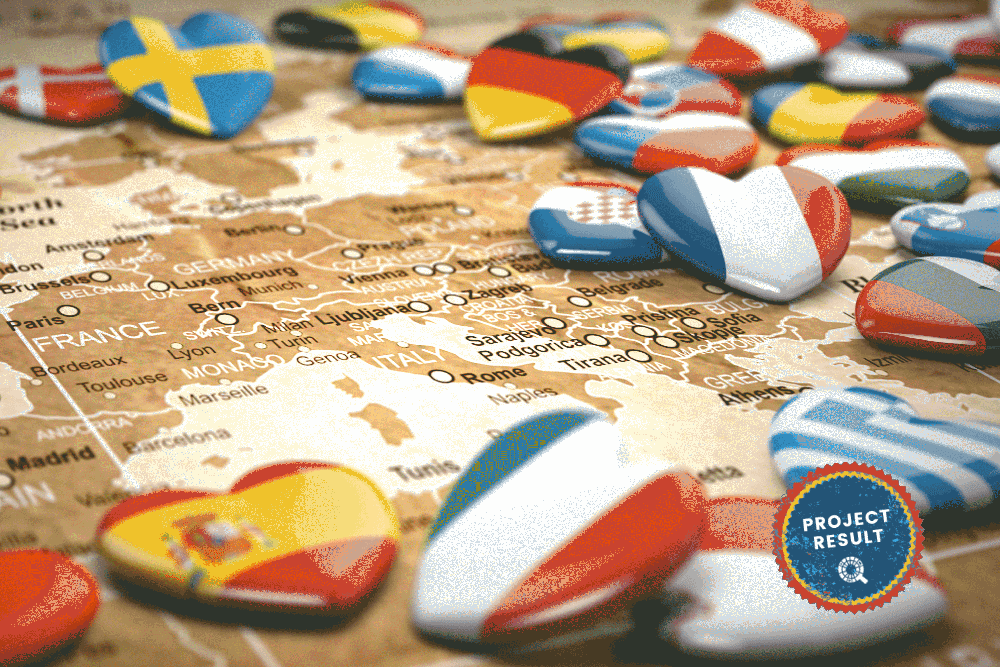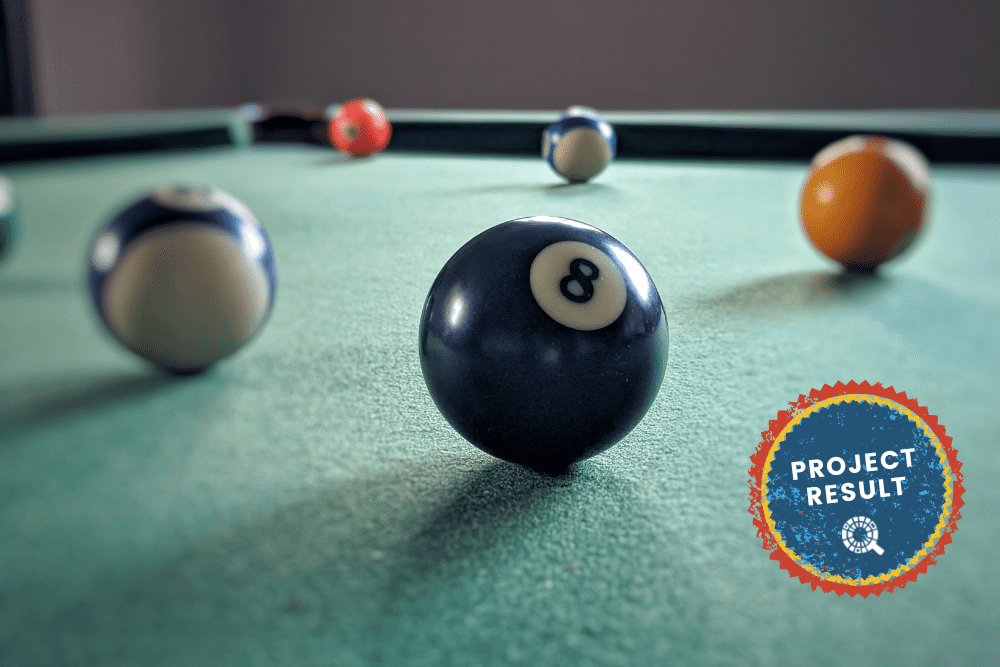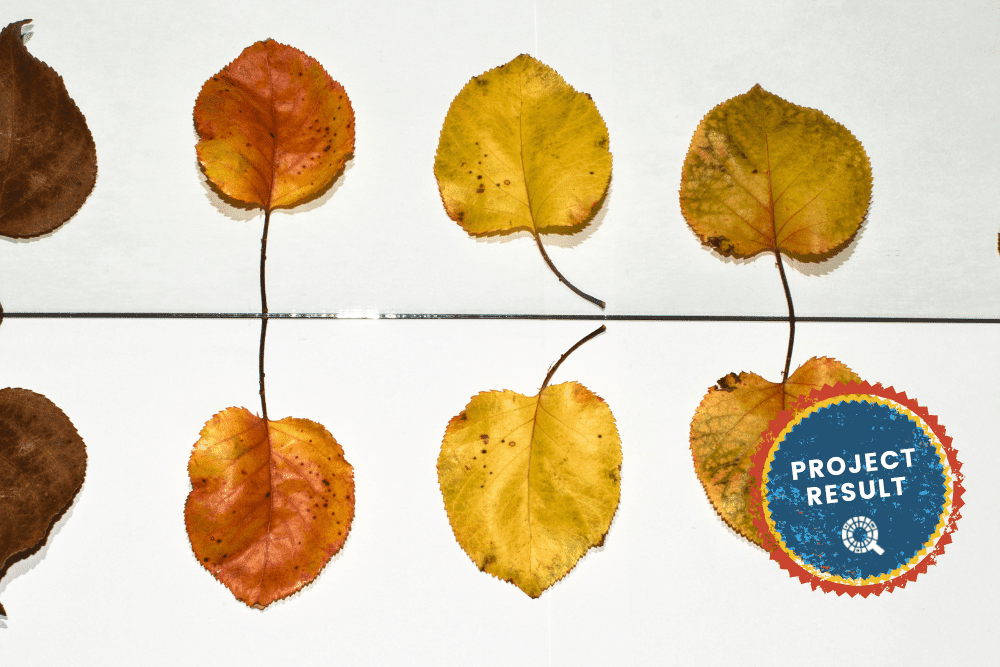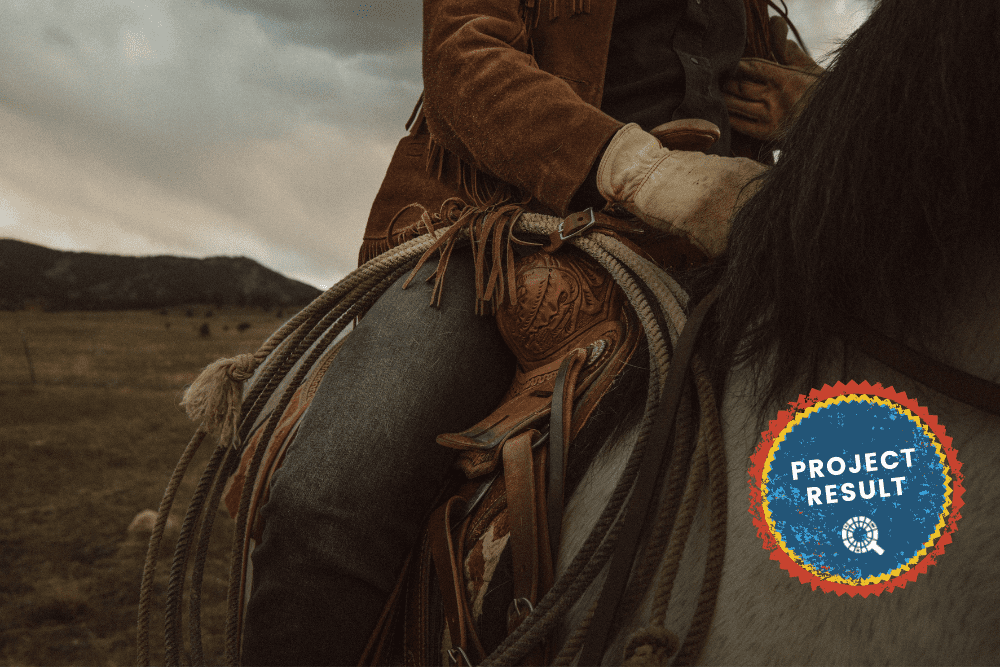Main aim of the study
The study’s aim is to investigate how a combination of methods (such as data analysis, computational or quantitative methods) could be applied to gather CS project information to support teachers’ practice and inspire them.
Period addressed by the study
Total duration of the CS Track project (2019-2022). During this time, interrelated studies of different durations have been carried out in parallel in order to answer our research questions.
Research questions
This study was divided into 3 case studies:
- Proof of concept and a first analysis of the data about CS projects available on online websites (Calvera-Isabal, Varas & Santos P, 2021).
- The analysis of how CS is communicated online and how an automatic method can be applied to extract and store data that might be used for educational purposes (Calvera-Isabal et al., 2023).
- A co-design process of a tool that shows information about CS gathered and supports teachers’ practices in formal education contexts.
The following research questions (Calvera-Isaba, Santos & Hernández-Leo, 2021) are the main ones derived from the studies above:
- “How can web scraping and data mining methods be used to collect/analyse data online about citizen science projects?”, addressed in studies a) and b).
- “How data from CS projects can be presented/analysed in relation to their potential to support learning outcomes in formal settings?” addressed in studies a) and b).
- “What features and content should be integrated into a digital tool to inspire teachers in the design process of scientific learning activities based on citizen science?” addressed in study c).
Research Context
Today’s societal challenges require citizens’ awareness of societal and environmental problems, which means the development of scientific literacy and critical thinking (Siarova, Sternadel & Szőnyi, 2019). Formal education settings (along with non-formal or informal) are needed to improve student’s interest and learning about sciences through the development of activities and usage of methodologies such as inquiry-based learning or active-learning methods (Bryan et al., 2011; Swarat, Ortony & Revelle, 2012).
CS, which involves citizens in the scientific process, is a clear example of how activities related to science might improve science understanding, motivation for Science, Technology, Engineering and Mathematics (STEM) careers, awareness for instance of ecology, knowledge or the development of skills (Vohland et al., 2021; Strasser et al., 2019; Hiller & Kitsantas, 2014; Kobori et al., 2016; Phillips et al., 2018). Nevertheless, although learning by participating in CS might be considered informal learning (due to usually it is unintended, indirect, unguided, and not reflected (Bela et al., 2016)), in some cases it is also introduced in formal environments (such as schools, universities, etc…) through participation in a CS project activity or using materials or tools developed by CS projects (such as guides, protocols, videos or apps) (Nistor et al., 2019). Some activities require the usage of tools, reading about the scientific process, understanding scientific concepts, analysing data or collecting data. Some studies have analysed how writing and reading about science and the usage of technical terms and specific strategies indicate literacy development (Glynn, Shawn & Muth, 1994; Baram‐Tsabari, Baram‐Tsabari & Yarden, 2005; Ristanto et al., 2018; Suggate et al., 2018; Hong & Diamond, 2012).
Teachers train students through learning activities transforming their subject knowledge (SMK) alongside their pedagogical content knowledge (PCK) into concrete pedagogical actions adapting them to an educational context (Park & Oliver, 2008). When we talk about teachers’ practice, we could see that they are influenced by their previous expertise, their student’s interest and the environment (which includes other teachers and educational materials) (Bennett, Agostinho & Lockyer, 2015). Considering this, the research explores how the information and resources about CS projects available online could inspire them to develop learning activities and support their practice. But, furthermore, we set teachers at the centre of the research, so we designed a user-centred approach (Barab & Squire 2004).
Research Methods applied
The full study follows a Design-Based Research (DBR) methodology (Hoadley & Campos, 2022) in combination with other methods to, iteratively, understand the connections between CS and education and how data available online could be used in formal education contexts.
Procedures applied
For each individual study, apart from DBR methodology, we followed different procedures and methodologies.
For the proof of concept (study a) and the analysis of online CS communication (study b) we did an exploratory analysis of the websites that have information about CS projects (3 for study a and 72 for study b) in order to better understand the websites’ structures. Furthermore, we used computational methods so we could develop a crawler that navigates through the sites to select and extract the data. Once the data was stored in the CS Track database, algorithms such as Name Entity recognition (NER) or Natural language processing (NLP) were used to give meaning to the non-categorized data, create new categories or anonymize personal data.
From study c), we combined DBR with a User Centred Design approach (UCD). Through 7 workshops, a total of 135 participants (primary and secondary) (N = 49) or pre-service teachers (N = 49) and TEL designers (N = 37) participated in data selection and design of a tool that will show the data extracted about CS projects from online sites. We collected their needs and opinions via a questionnaire (N = 98 responses), a card-sorting process (N = 14) and paper prototypes (N = 34).
Summary of results/findings
So far, the main results obtained from all the studies are aligned. Our results show that by having the data extracted from different sources, teachers can benefit from (1) having information about scientific projects organised into categories, (2) a variety of information and vocabulary related to science, (3) educational/scientific resources that could be used in or to prepare class activities (4) developed technology that can be used in scientific inquiry activities (Calvera-Isabal, Vara & Santos, 2021; Calvera-Isabal et al., 2023). Those results are aligned with the study c (Calvera-Isabal, Santos, Hernández-Leo, Under Revision), from which we can conclude that teachers used new technologies such as “internet search”, “blogs or forums” and “Open educational resources (OER)” to get inspiration.
From the co-design process, we could identify functionalities needed for the tool to allow teachers to explore the data about CS projects. Furthermore, we identified what type of data they wanted to see in the tool. They suggested having information about the title of the CS project, a brief description, tasks or how to participate, learning outcomes promoted or research areas that apply to the project.
Conclusion
Once known that automatic computational methods can be used to centralise all the data available online, it has been used to understand the CS field better. Regarding the online communication of CS, there is still work to be done in connection to education. Other studies conducted by CS Track researchers explored how information about learning and education is shared online. For instance, regarding the information needed by teachers to inspire themselves, we also requested participants to design a learning activity during the workshops to see what kind of information they are interested in. Initial results from the data analysed were shared during the workshop conducted on June 14th, 2022 and will be part of a future publication (Calvera-Isabal, Santos & Hernández-Leo, 2021).
Link to complete report
Calvera-Isabal M, Santos P, Hernández-Leo D. Citizen science, data science and education: how to support teacher’s inspiration during the learning activities design with technology enhance learning. Paper presented at: Doctoral Consortium of the Sixteenth European Conference on Technology Enhanced Learning (EC-TEL); 2021 Sep 20–24, Bolzano, Italy.
Calvera-Isabal M, Santos P, Hernández-Leo D. Towards citizen science-inspired learning activities: the co-design of an exploration tool for teachers following a Human-Centred design approach. [Under revision – November 2022, for further information contact the corresponding authors]
Calvera-Isabal, M., Santos, P., Hoppe, H., & Schulten, C. (2023). How to automate the extraction and analysis of information for educational purposes. [Cómo automatizar la extracción y análisis de información sobre ciencia ciudadana con propósitos educativos]. Comunicar, 74. https://doi.org/10.3916/C74-2023-02
Calvera-Isabal M, Varas N, Santos P. Computational techniques for data science applied to broaden the knowledge between citizen science and education. In: Sampson DG, Ifenthaler D, Isaías P, editors. Proceedings of the 18th International Conference on Cognition and Exploratory Learning in the Digital Age (CELDA 2021); 2021 Oct 13-15; Lisbon, Portugal. Lisbon: IADIS Press; 2021. p. 219-26. http://hdl.handle.net/10230/49216
Link to dataset
Descriptors definition: https://zenodo.org/record/7310445#.Y2zmbXaZNPY
List of websites: https://zenodo.org/record/7310295#.Y2zmwXaZNPY
Questionnaires: https://zenodo.org/record/6655987#.Y2z-yHaZNPY
Cards designed for card sorting and paper prototyping activity: https://zenodo.org/record/6655972#.Y2z_LnaZNPY
Prototype 1st version – CS projects dashboard: https://zenodo.org/record/6655902#.Y2z_-naZNPY
Prototype 2nd version – CS projects dashboard: https://zenodo.org/record/6655910#.Y20AAXaZNPY
Learning activity design canva: https://zenodo.org/record/6655958#.Y20AAXaZNPY
Citizen science to inspire educators – The importance of metadata and open data, slides presentation: https://zenodo.org/record/7350688#.Y3308XaZOUk
References
Barab, S., & Squire, K. (2004). Design-based research: Putting a stake in the ground. The Journal of the Learning Sciences, 13(1), 1–14. https://doi.org/10.1207/s15327809jls1301
Baram‐Tsabari, A., & Yarden, A. (2005). Text genre as a factor in the formation of scientific literacy. Journal of Research in Science Teaching: The Official Journal of the National Association for Research in Science Teaching, 42(4), 403-428.
Bela, G., Peltola, T., Young, J. C., Balázs, B., Arpin, I., Pataki, G., … & Bonn, A. (2016). Learning and the transformative potential of citizen science. Conservation Biology, 30(5), 990-999.
Bennett, S., Agostinho, S., & Lockyer, L. (2015). Technology tools to support learning design: Implications derived from an investigation of university teachers’ design practices. Computers & Education, 81, 211-220.
Bryan, Robert R., Shawn M. Glynn, and Julie M. Kittleson. “Motivation, achievement, and advanced placement intent of high school students learning science.” Science education 95.6 (2011): 1049-1065.
Glynn, Shawn M., and K. Denise Muth. “Reading and writing to learn science: Achieving scientific literacy.” Journal of research in science teaching 31.9 (1994): 1057-1073.
Hoadley, C., & Campos, F. C. (2022). Design-based research: What it is and why it matters to studying online learning. Educational Psychologist, 57(3), 207-220.
Hiller, S. E., & Kitsantas, A. (2014). The effect of a horseshoe crab citizen science program on middle school student science performance and STEM career motivation. School Science and Mathematics, 114(6), 302-311.
Hong, S. Y., & Diamond, K. E. (2012). Two approaches to teaching young children science concepts, vocabulary, and scientific problem-solving skills. Early Childhood Research Quarterly, 27(2), 295-305.
Kobori, H., Dickinson, J. L., Washitani, I., Sakurai, R., Amano, T., Komatsu, N., … & Miller-Rushing, A. J. (2016). Citizen science: a new approach to advance ecology, education, and conservation. Ecological research, 31(1), 1-19.
Nistor, A., Clemente-Gallardo, J., Angelopoulos, T., Chodzinska, K., Clemente Gallardo, M., Gozdzik, A., … & Vojinovic, M. (2019). Bringing Research into the Classroom–The Citizen Science approach in schools. Scientix Observatory.
Park, S., & Oliver, J. S. (2008). Revisiting the conceptualisation of pedagogical content knowledge (PCK): PCK as a conceptual tool to understand teachers as professionals. Research in science Education, 38(3), 261-284.
Phillips, T., Porticella, N., Constas, M. and Bonney, R., 2018. A Framework for Articulating and Measuring Individual Learning Outcomes from Participation in Citizen Science. Citizen Science: Theory and Practice, 3(2), p.3. DOI: http://doi.org/10.5334/cstp.126
Ristanto, R. H., Zubaidah, S., Amin, M., & Rohman, F. (2018). From a reader to a scientist: developing cirgi learning to empower scientific literacy and mastery of biology concept. Biosfer: Jurnal Pendidikan Biologi, 11(2), 90-100.
Siarova, H., Sternadel, D. & Szőnyi, E. 2019, Research for CULT Committee – Science and Scientific Literacy as an Educational Challenge, European Parliament, Policy Department for Structural and Cohesion Policies, Brussels.
Strasser, B., Baudry, J., Mahr, D., Sanchez, G., & Tancoigne, E. (2019). ” Citizen Science”? Rethinking Science and Public Participation. Science & Technology Studies, 32(ARTICLE), 52-76.
Suggate, S., Schaughency, E., McAnally, H., & Reese, E. (2018). From infancy to adolescence: The longitudinal links between vocabulary, early literacy skills, oral narrative, and reading comprehension. Cognitive Development, 47, 82-95.
Swarat, Su, Andrew Ortony, and William Revelle. “Activity matters: Understanding student interest in school science.” Journal of research in science teaching 49.4 (2012): 515-537.
Vohland, K., Land-Zandstra, A., Ceccaroni, L., Lemmens, R., Perelló, J., Ponti, M., … & Wagenknecht, K. (2021). The science of citizen science (p. 529). Springer Nature.
Photo by Eneida Nieves on Pexels.

